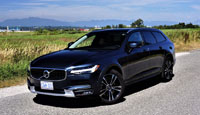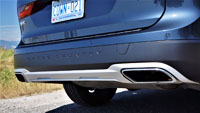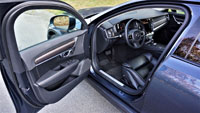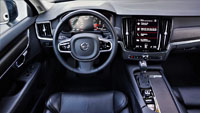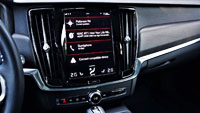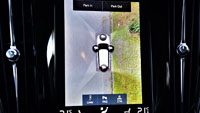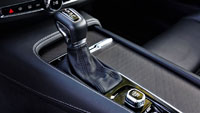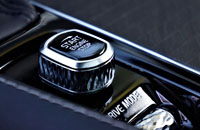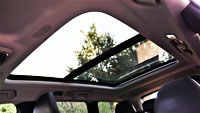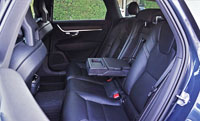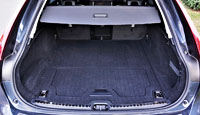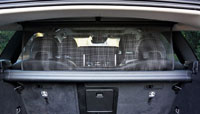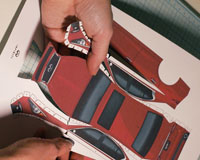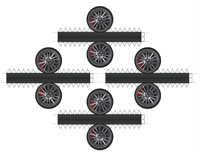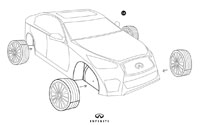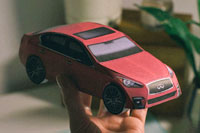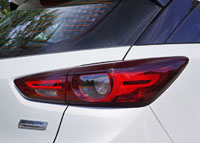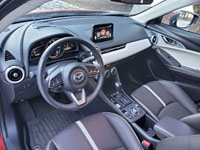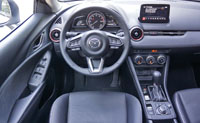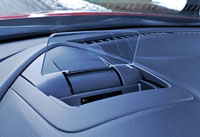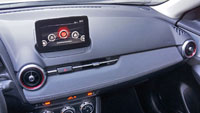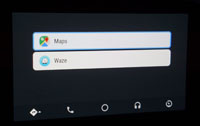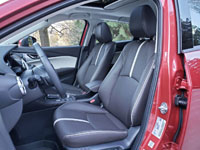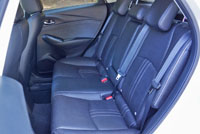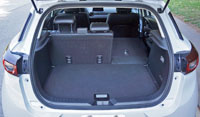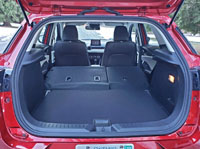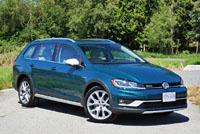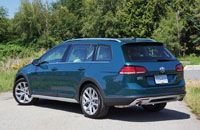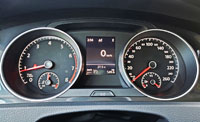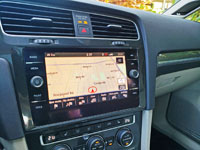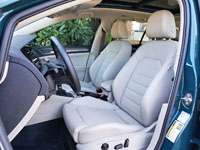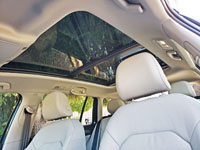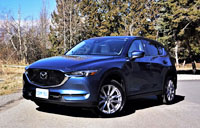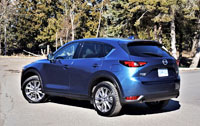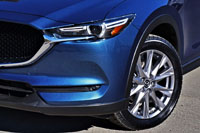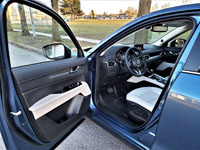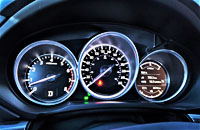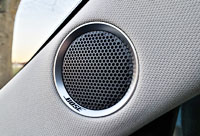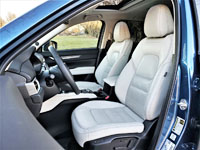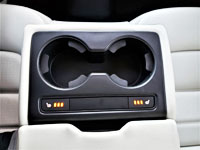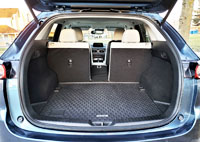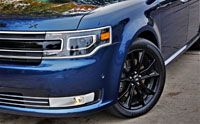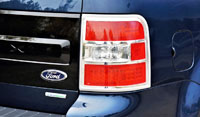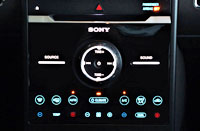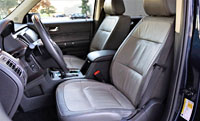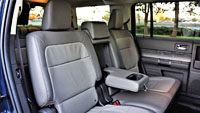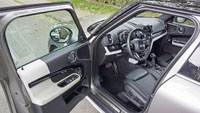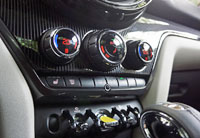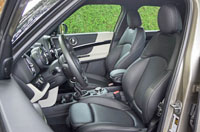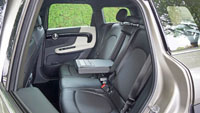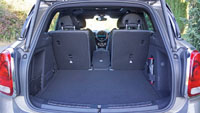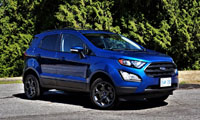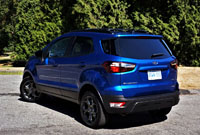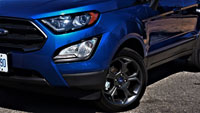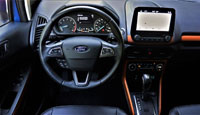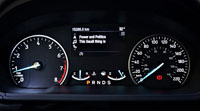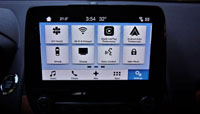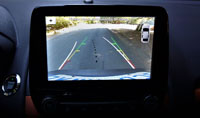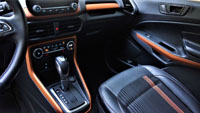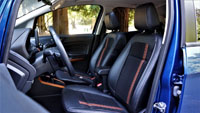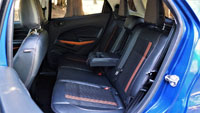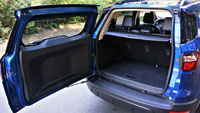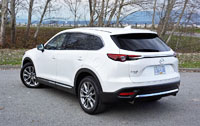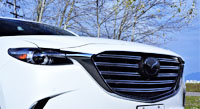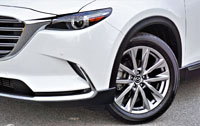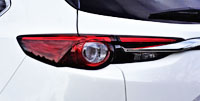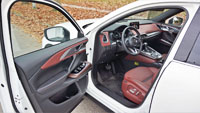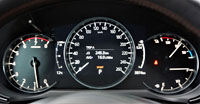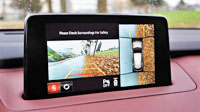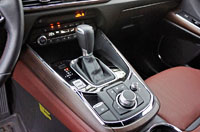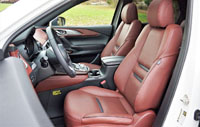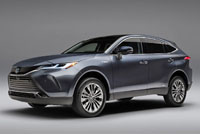
Sometimes automakers make choices that don’t seem to make much sense at the time, but for reasons we outsiders will never know, vehicles get cancelled that really should have lived on.
The 2009–2015 Venza was one such vehicle, a five-occupant mid-size crossover SUV that, while a bit more wagon-like than utility, due to Toyota already offering its rugged, truck-based, off-road capable five-passenger 4Runner, nevertheless filled an important void in the brand’s North American lineups.
Thanks to fairly good initial sales, Toyota would’ve arguably found more traction if it had chosen to bring back a redesign after four to five or years or so, rather than cancel it after six. At least the Japanese brand has a recognizable nameplate to fall back on now that it’s ready to reenter one of the more profitable auto segments. The new Toyota Venza will therefore launch in Canada as a 2021 model, starting this summer.
While standard with all-wheel drive, more unexpectedly is the announcement of a standard hybrid drivetrain. This follows Toyota’s commitment to electrify its entire lineup by 2025, and therefore the new Venza will be joined by a wholly redesigned 2021 Sienna that will only be available with a hybrid electric drivetrain as well.
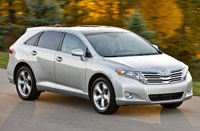
Additional Toyota vehicles sold with the automaker’s full hybrid drive system include the now legendary Prius, also with available with new AWD-e four-season capability, plus the new Corolla Hybrid, the Camry Hybrid, the RAV4 Hybrid, and the Highlander Hybrid, while the Prius Prime offers plug-in, 100 percent electric (EV) motive power for short distances at city as well as highway speeds, plus last but not least is the Mirai hydrogen fuel-cell-powered EV.
Since the first-generation Venza was discontinued, Toyota hasn’t offered a two-row, five-passenger crossover SUV in the mid-size class. As noted the iconic 4Runner remains a 4×4-capable off-roader competing more directly with Jeep’s Wrangler and soon Ford’s new Bronco, so it won’t attract the same kind of soft-roader clientele. Ford in mind, its Edge will be one of the Venza’s direct competitors, while the even more popular three-row Explorer will continue to duke it out against Toyota’s recently redesigned Highlander. Of note, the Edge was the best-selling mid-size SUV in calendar year 2019 thanks to 19,965 sales, compared to the Highlander that only found 13,811 new Canadian owners. What’s more, Ford sold 29,632 Edge and Explorer models collectively last year, and that impressive sales lead doesn’t even factor in that 2019 was a terrible year for the Explorer due to Ford’s slow rollout of the all-new 2020 version. Ford claimed that production issues were at fault, but either way year-over-year Explorer sales were down 47 percent plunge in Canada during 2019, so we can expect the disparity in Ford’s mid-size SUV sales lead to grow even more in 2020 (overall sale will be down, however, due to COVID-19).
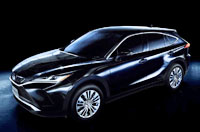
As of December 31, 2019, five two-row mid-size SUVs sold better than the Highlander in the Canadian mid-size SUV segment. The Edge was followed by Hyundai’s Santa Fe (which is now available solely as a five-passenger model due to the new three-row Palisade) that found 18,929 new customers last year, whereas Jeep’s Grand Cherokee attracted 18,659 new owners in 2019. Kia’s Sorento (now also sold with just two rows thanks to Kia’s new Telluride) also beat Highlander sales with 16,054 deliveries down the road during the same 12 months, while Chevy’s all-new Blazer sold 15,210 units last year. Nissan only sold 12,000 Muranos in 2019, but when this model finally gets a redesign it will probably find more takers than the three-row Highlander too, so it’s clear that the new 2021 Venza critically important for Toyota.
Toyota is taking a significant risk by only offering a single hybrid drivetrain, particularly because this choice will undoubtedly make the Venza more expensive to build and sell than rivals’ gasoline-powered counterparts, but it nevertheless should be well received by those wanting to save fuel and reduce pollutants. A recent spike in fuel prices may make some Canadians more open to spending more on a hybrid powertrain, but even with pump prices higher now than in recent months they remain relatively low when compared to the last couple of years.
There should be no fears about Toyota hybrid reliability, mind you, as the brand initiated the entire market segment with its first-generation Prius in 1997 (in 2000 as a 2001 model here in Canada) and garnered an enviable reputation for near bulletproof dependability for all of its various hybrid-electric drivetrains.

No Transport Canada five-cycle fuel economy figures have been announced yet, but Toyota estimates the new 2021 Venza to manage a combined city and highway rating of 5.9 L/100km, which will make it the most fuel-efficient vehicle in its class. Of note, the brand employs active grille shutters in order to minimize drag, aiding fuel economy at highway speeds.
The original Venza shared its platform architecture with the Japanese domestic market (JDM) Toyota Harrier, amongst other Toyota/Lexus products such as the Camry and Highlander. The Harrier was even more closely aligned with our Lexus RX (particularly the first-generation Harrier that was barely disguised when it debuted as the 1999 Lexus RX 300). Over the five-plus-year period that Toyota didn’t offer the Venza in Canada, covering 2016 until today, a third-gen Harrier came and went in the JDM, but now that we have photos of both the fourth-gen Harrier and the new 2021 Venza it’s easy to see the similarities between these two vehicles.
Toyota will use its well-proven 2.5-litre Atkinson-cycle four-cylinder hybrid powertrain for the new 2021 Venza and upcoming 2021 Sienna, this drivetrain also powering the Camry Hybrid, RAV4 Hybrid and Highlander Hybrid (as well as the Avalon Hybrid in the U.S. market). The powertrain’s combined system output is 219 horsepower, making it identical to the 2020 RAV4 Hybrid, although more powerful than the Camry Hybrid that only puts out 208 hp, and not as potent as the new 2020 Highlander Hybrid that makes a total of 240 hp.

The new Toyota Hybrid System II drivetrain incorporates a lighter lithium-ion battery that improves efficiency as well as performance. Like the RAV4 Hybrid and Highlander Hybrid, the Venza receives two electric motors that provide maximum torque almost immediately at takeoff. The rear motor provides motive power to the rear wheels, which Toyota calls Electronic On-Demand All-Wheel Drive. The rear-mounted motor only engages when the back wheels experience slippage, at which point the drive system can appropriate up to 80 percent of system torque to the wheels behind. This said the system defaults to front-wheel drive so as to minimize fuel usage, and only uses its rear wheels when necessary.
Speaking of fuel savings, the Venza includes an Eco mode that “changes the throttle and environmental logic” to enhance overall efficiencies, states Toyota in a press release, while Normal and Sport modes (the former “ideal for everyday driving” and the latter sharpening “throttle response”) also come standard, whereas an EV mode allows limited use of full electric motive power at “low speeds for short distances,” just like Toyota provides with its other non-plug-in hybrid models.
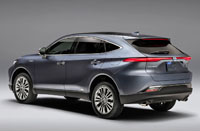
Toyota claims the new 2021 Venza’s regenerative braking system, which captures otherwise lost electricity caused by kinetic brake friction and then reroutes it to the model’s electrical system, provides better control than in previous hybrid generations, and in fact can be used for “downshifting” via the sequential gear lever’s manual shift mode. Each downshift increases the regenerative system’s braking force in steps, which “fosters greater control when driving in hilly areas,” says Toyota, while the hybrid system also benefits ride comfort by “finely controlling the drive torque to suppress pitch under acceleration and deceleration.” Toyota calls this differential torque pre-load, and it’s particularly useful when taking off from a corner or managing curves on both normal and slippery road surfaces. This feature also aids steering performance at higher speeds, plus it improves straight-line stability and controllability on rougher road surfaces. Additionally, Toyota incorporates new Active Cornering Assist (ACA) electronic brake vectoring into the Venza so as to minimize understeer and thus improve handling yet further.
The new 2021 Venza is built on the Toyota New Global Architecture K (TNGA-K) platform that also underpins the 2018–present Camry, 2019–present Avalon, 2019–present RAV4, 2020 Highlander, and the redesigned 2021 Sienna, not to mention the 2019–present Lexus ES and upcoming Lexus NX and RX replacements. In a press release Toyota states that the TNGA-K architecture helps the Venza deliver an “intuitive driving experience” with “greater driving refinement,” including “comfortable urban and highway performance” and “predictable handling, plus low noise, vibration, and harshness (NVH).” The new Venza features extensive high-strength steel for a more rigid body structure that helps improve its front strut and rear multi-link suspension’s ride quality and handling, plus its overall safety.

The new base Venza LE rides on an 18-inch set of multi-spoke two-tone alloy wheels, whereas XLE and Limited trims arrive standard with a set of 19-inch multi-spoke super chrome finished alloys.
Inside the cabin, the near top-line Venza XLE and the fully-loaded Limited model get advanced touch-sensitive capacitive controls on their centre stack instead of the LE’s physical buttons, although you’ll probably notice the big 12.3-inch centre infotainment touchscreen first. This said even the base model’s 8.0-inch centre display is big for an entry-level model.
The Venza’s larger upgraded infotainment system receives a 1,200-watt, 12-channel, nine-speaker (with sub) JBL audio system that Toyota claims to be “sonically gorgeous,” plus embedded navigation with Destination Assist comes standard too. The new nav system features switchable driver or front passenger operation, while both systems include smartphone integration from Apple CarPlay, which comes complete with its Siri voice control system, as well as Android Auto with its Google Assistant, while Bluetooth wireless connectivity is also included.

Advanced technologies in mind, the Venza will make a fully digital instrument cluster available in upper trims, not to mention a 10-inch colour head-up display that will project key information, like vehicle speed, the hybrid system’s details, and TSS 2.0 safety and driver assist functions, onto the windscreen ahead of the driver, while an electronic rearview mirror with an auto-dimming function plus a HomeLink garage door opener will provide a clearer rear view, which will be especially helpful when rear passengers and/or luggage is interrupting rearward vision. The electronic rearview mirror only needs the flick of a switch to go from conventional to digital operation.
When moving up to Limited trim, parking lot safety is further improved via a 360-degree bird’s-eye view from a surround camera system that Toyota calls its Panoramic View Monitor. The standard camera gets “projected path” active guidelines as well as an available “rear camera cleaning system [that] sprays washer fluid to clear away water droplets, mud, snow, and snow-melting road treatments from the lens,” says Toyota.
Wireless phone charging is another area Toyota leads most rivals, so it’s no surprise the Venza makes this handy feature available, while additional options include ventilated front seats, proximity Smart Key for all four doors plus the tailgate (the latter also providing hands-free powered operation), plus more.
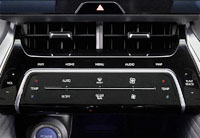
More in mind, new “Star Gaze” is a fixed electrochromic panoramic glass roof that can instantly switch between transparent and frosted modes by flicking a switch on the overhead console. Toyota claims the frosted mode “brightens the interior while reducing direct sunlight, giving the cabin an even more open, airy, and inviting feeling.”
What’s more, each Venza trim comes standard with Toyota’s TSS 2.0 suite of advanced safety and driver assistance features such as pre-collision system and automatic emergency braking with pedestrian and cyclist detection, blind spot monitoring, lane departure assist, rear cross-traffic alert, lane tracing assist, automatic high beams, and full-speed adaptive cruise control.
As for interior roominess, we can expect the Venza’s passenger compartment to be similar in size to the first and second row of the new Highlander that as noted earlier shares underpinnings, which should make it more accommodating than the current RAV4. It’s possible to carry up to 1,027 litres (36.2 cubic feet) of cargo behind the rear seats, which is oddly 32 litres (1.1 cu ft) less than what you’ll find in a compact RAV4, that model good for 1,059 litres (37.4 cu ft) of dedicated cargo space, while the Highlander provides 1,010 litres (35.6 cu ft) more space when its third row laid flat.
Pricing for the 2021 Venza will be announced closer its summer arrival date.
Story credits: Trevor Hofmann
Photo credits: Toyota

